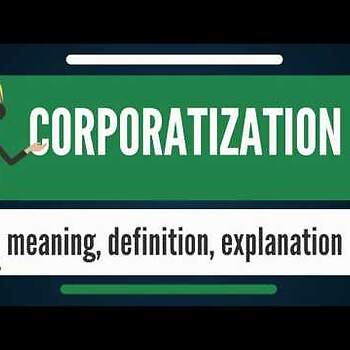Corporatization
Corporatization is the process of transforming a department that is embedded within a municipality or ministry into a public organization with its own corporate identity: either a statutory body functioning under public law or a government owned company incorporated under company law.
Following the wave of investments in urban water supply and sanitation in developing countries that started in the second half of the 20st century, it was soon realized that the physical infrastructure which was constructed could not be managed by a typical government department but needed to be operated and maintained by a professional organization.
In many countries this resulted in the establishment of state or municipal-owned WWS departments or, more autonomous, water utilities. Often this activity was driven by the central government, but in later years there have been massive decentralization programs in many countries (especially in Asia and Latin America), where the ownership of water utilities was transferred to regional governments or municipalities. Often, this decentralization was part of a wider policy of devolution of powers and responsibilities to lower levels of government. Obviously, the influence of the central or local government on the operations of these utilities remained substantial.
Initially, the WSS utilities were focused on connecting households, industries, and commercial organizations to the WSS systems and to establish internal mechanisms for technical operation and maintenance, for financial administration and for billing and collection of water fees. These early water utilities were often faced with a lack of revenues due to (too) low water tariffs, political interference, a lack of transparency and technical and administrative inefficiencies such as high Non-Revenue Water, high staffing costs, low collection ratios etc.
From the mid-1980s onwards, the focus gradually shifted to transforming municipal water departments and other governmental WSS bodies into modern and efficient service delivery organizations, characterized by:
• A high degree of autonomy – being independent to manage professionally without arbitrary interference by others
• Accountability – being answerable to other parties for policy decisions, for the use of resources, and for performance; and
• Consumer orientation – reporting and “listening” to clients, and working to better meet their needs
To achieve the above, there has been a lot of emphasis on corporatization (creating autonomy and accountability) and capacity building (see separate section on capacity building). Corporatization involved the establishment of more autonomous water utilities which had a legal corporate identity (in most cases a statutory body or a state-owned enterprise operating under company law). Such utilities were governed by a Board or similar body to provide oversight and create distance between the owners of the utility and the management. The water utilities were to be run by professional managers and staff, who were accountable to their Boards and to their clients.
Corporatization has often been supported or initiated by financing agencies. E.g. a Bank offers a loan for extending a water or wastewater system for a municipality. However, the revenues and the expenses of the WSS department in that municipality are part of the municipal financial administration and the revenues flow back to the municipality, along with other types of revenues, such as taxes and levies. It is not possible to separate WSS revenues and make sure they are spent on adequate O&M or re-investments in the WSS system. The Bank will therefore support the establishment of a separate utility with an independent Board and create distance between the Municipality and the Water Utility.
The shareholders of the new and autonomous water utilities often consisted of municipalities, provincial and/or national level government departments. The shareholders appoint the members of the Board, who in turn recruit, appoint and supervise a CEO and the senior management of the water utility.
Complementary measures to ensure the efficient and transparent operation of water utilities over the years have involved the following type of measures:
a. The establishment of service level or performance agreements between water utilities and the owners (on behalf of the customers) to create an objective basis for measuring the performance of water utilities
b. Strengthening of regulation and the establishment of regulatory bodies to monitor the performance of water utilities and regulate the price for water (see separate section on Regulation)
c. Introducing Community Service Obligations, which is a contract between a water utility and the government to provide certain unprofitable services (e.g. WSS for underprivileged groups of people living in informal settlements) which are (partly) paid for by subsidies.
d. Introducing Benchmarking as a tool to compare performance between water utilities and in this way stimulate accountability and efficiency (see separate section on Benchmarking)
In later phases, municipal water utilities have in many countries been merged into larger, regional or provincial water service providers to benefit from economies of scale.
